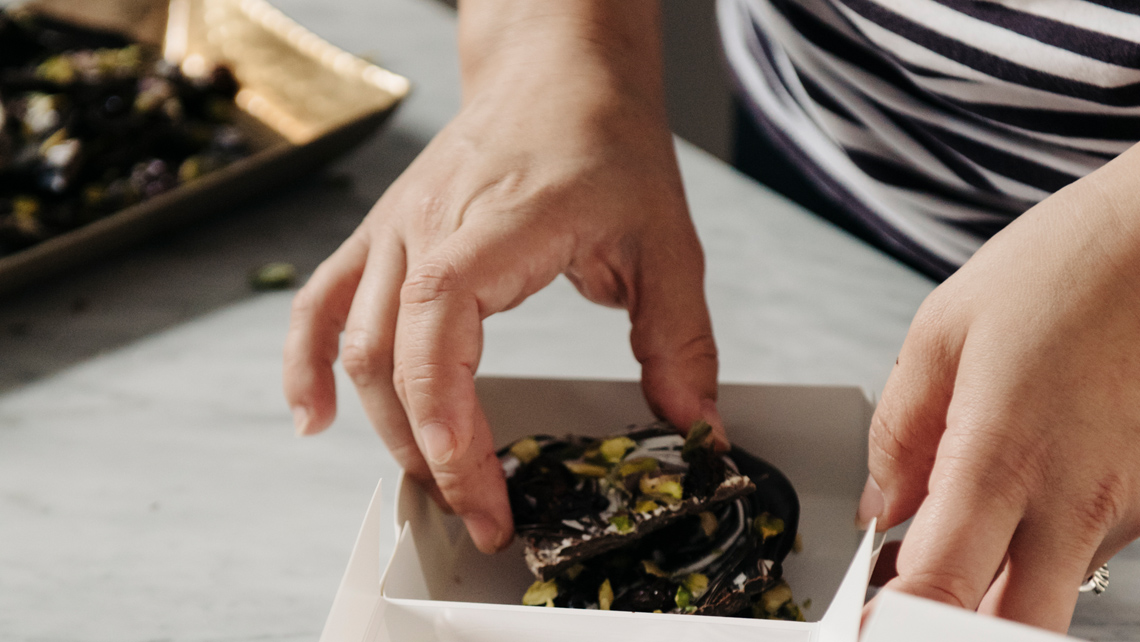Throughout the year many of us now try to live more sustainably, separating our waste and buying reusable products wherever possible. But when it comes to the festive period, we still dream of those brightly colored packages under the tree – is it possible to have the nicely wrapped gifts, but without such a large impact on the environment?
A sticky (and glittery) problem
Gift wrapping is a global cultural phenomenon, with millions of rolls of wrapping paper sold each year. But not all gift wrap is created equal, and there have been trends in recent years for designs that feature plastics, foils, and glitter – making the paper not easily recyclable with our normal household paper waste. These additions combine with the sticky tape that we add at home when wrapping, and the contamination becomes a major problem in the recycling process. The contaminants produce a sticky residue as they melt in the drying process when the recycled paper is made – and as they are a mix of different kinds of plastic they can’t be separated and recycled.
Separation solutions
Despite being a huge problem for paper reprocessing, only about 5% of the total volume of giftwrap is made from plastic or plastic/paper composites these days. This means the best strategy is to separate the plastic from the valuable fibrous material. Recently there has been a lot of progress in separation technologies – they are still costly and use a lot of energy; however, this can usually be compensated by the higher quality and yield of the recycled end products.
A rise in consumer demand for recycled – and easily recyclable – gift wrap is driving the industry towards more sustainable solutions.
The European Community, and more recently the Chinese government, are also in the process of introducing new environmental regulations and providing incentives for producers to develop and establish new technologies to improve the recycling rates of all packaging materials. Along with increasingly strict legislation, a rise in consumer demand for recycled – and easily recyclable – gift wrap is also driving the industry towards more sustainable solutions.
Creative repurposing and the scrunch test
So what can we do as consumers to gift a more sustainable present? There are many ways to make your gift wrapping more eco-friendly, and they start with reuse: instead of scrunching up that used wrapping paper and tossing it away, fold it nicely and bring it out again next year. It can be nice to see old favorites again! Gift boxes can be folded flat and gift bags saved for next year too. You can also get creative and wrap your gifts with something you already own: use old newspapers, cut up some pretty material, or get arty with paper you already have.
Use fiber-based paper without foil or glitter, and avoid thin sheets which break easily.
If you do decide to buy gift wrap this year, choose fiber-based paper without foil or glitter, and avoid thin, flimsy sheets which break easily. This sort of low-quality paper has a large amount of fillers and binders, which are difficult to recycle. A good test is to scrunch up the wrapping paper in your hand: if it makes a crackling noise and feels stiff, strong, and warm in your hand it’s made of good quality fiber. This means it’ll be easy to recycle and will add strength to the next generation of wrapping paper! After the big day when you’re sorting the recycling, make sure you don’t put any plastic wrap or sticky tape into the paper waste. And, most importantly, have a wonderful festive period!
Brighter and more sustainable gift wrap
Kemira has a wide portfolio of products which can help in the production of gift wrap paper, with a focus on improving the quality and suitability of the end-product as well as energy and raw material efficiency.
“Our product solutions help to make both fresh and recycled fibers whiter and better for printing, and the paper stronger and more attractive. We also supply all suitable sizing chemicals to protect the wrapping paper from moisture and other contaminants. Many of our products are already made from renewable resources like wood resins or vegetable oils, and we are replacing more and more fossil-based products with renewable alternatives. We are also supporting the recycling of fiber-based packaging materials with solutions and programs that help avoid the deposition of tacky adhesives and plastic in all parts of the paper machine.” explains Jan-Luiken Hemmes from Kemira’s Business Development.

